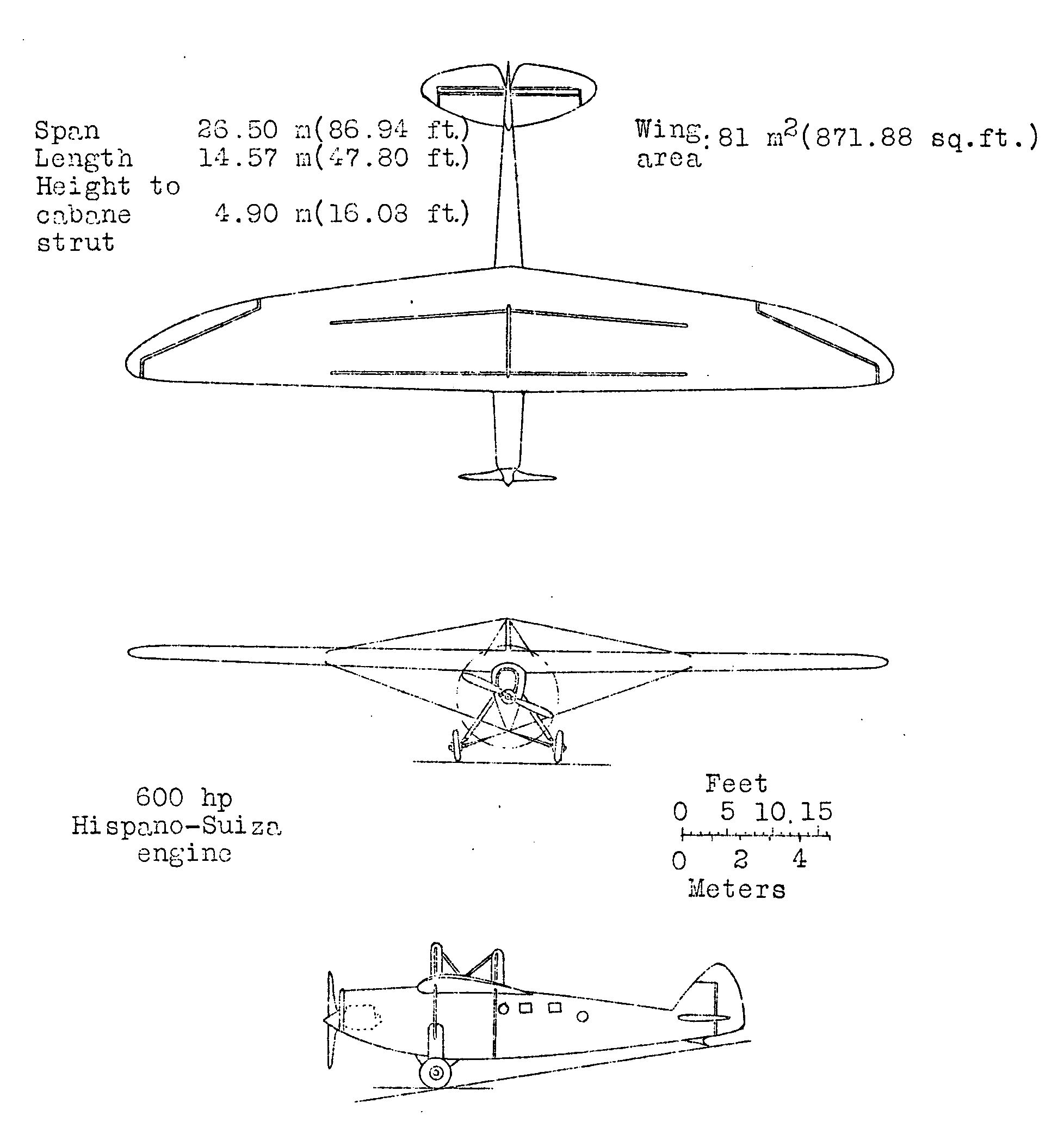Blériot 110 on:
[Wikipedia]
[Google]
[Amazon]
The Blériot 110 (or Blériot-Zappata 110) was a French aircraft built in 1930 to attempt new world aerial distance records.
"Mirrors Help Record Ship Take-Off and Land."
''Popular Mechanic'', December 1933, p. 807. The aircraft's first flight on 16 May 1930 was cut short by a fuel supply problem, although no damage was sustained. After repairs, it was taken to Oran, Algeria, to make an attempt on the closed-circuit distance record. Between 15 November and 26 March 1932, the Blériot 110, flown by Lucien Bossoutrot and Maurice Rossi, broke this record three times; on the final occasion staying aloft for 76 hours 34 minutes and covering a distance of . By this time, the aircraft had been named '' Joseph Le Brix'' in honour of the pilot who had died flying the 110's rival, the

Design and development
Built specifically at the request of the ordered by the Service Technique of the French Air Ministry. it was a two-seat high-wingmonoplane
A monoplane is a fixed-wing aircraft configuration with a single mainplane, in contrast to a biplane or other types of multiplanes, which have multiple planes.
A monoplane has inherently the highest efficiency and lowest drag of any wing confi ...
constructed of wood.
The fuselage
The fuselage (; from the French ''fuselé'' "spindle-shaped") is an aircraft's main body section. It holds crew, passengers, or cargo. In single-engine aircraft, it will usually contain an engine as well, although in some amphibious aircraft t ...
was a stressed-skin structure with a teardrop-shaped cross section, with two upper longerons
In engineering, a longeron and stringer is the load-bearing component of a framework.
The term is commonly used in connection with aircraft fuselages and automobile chassis. Longerons are used in conjunction with stringers to form structural ...
and a ventral keel: the load-bearing covering consisted of three layers of whitewood strips.
It was fitted with six fuel tanks in the wings and four in the fuselage
The fuselage (; from the French ''fuselé'' "spindle-shaped") is an aircraft's main body section. It holds crew, passengers, or cargo. In single-engine aircraft, it will usually contain an engine as well, although in some amphibious aircraft t ...
, holding a total of 6,000 L (1,319 Imperial gallon
The gallon is a unit of volume in imperial units and United States customary units. Three different versions are in current use:
*the imperial gallon (imp gal), defined as , which is or was used in the United Kingdom, Ireland, Canada, Austra ...
s or 1,585 US gal). Because the pilot and co-pilots seats were behind the fuselage fuel tanks, a periscope was fitted for take-offs and landings. A sleeping couch was fitted behind the co-pilot's station so one of the crew members could sleep on long-distance flights.''Popular Mechanic'', December 1933, p. 807. The aircraft's first flight on 16 May 1930 was cut short by a fuel supply problem, although no damage was sustained. After repairs, it was taken to Oran, Algeria, to make an attempt on the closed-circuit distance record. Between 15 November and 26 March 1932, the Blériot 110, flown by Lucien Bossoutrot and Maurice Rossi, broke this record three times; on the final occasion staying aloft for 76 hours 34 minutes and covering a distance of . By this time, the aircraft had been named '' Joseph Le Brix'' in honour of the pilot who had died flying the 110's rival, the
Dewoitine D.33
The Dewoitine D.33 was a single-engine low-wing all-metal monoplane aircraft designed and produced by the French aircraft manufacturer Dewoitine.Durand, William Frederick - ''Aerodynamic Theory. A General Review of Progress. Under a Grant of the G ...
.
On 5 August 1933, Paul Codos and Maurice Rossi set a new straight-line distance record, flying from New York
New York most commonly refers to:
* New York City, the most populous city in the United States, located in the state of New York
* New York (state), a state in the northeastern United States
New York may also refer to:
Film and television
* '' ...
to Rayak
Rayaq - Haouch Hala ( ar, رياق), also romanized Rayak, is a Lebanese town in the Beqaa Governorate near the city of Zahlé. In the early 20th century and up to 1975 and the outbreak of the civil war, it was Lebanon's most important railway ...
, Syria – a distance of . Further records were attempted over the next two years, but these were proved unsuccessful, and the 110 was scrapped.
Specifications

See also
References
;Notes ;Bibliography * * {{DEFAULTSORT:Bleriot 110 High-wing aircraft Single-engined tractor aircraft 1930s French experimental aircraft 110 Aircraft first flown in 1930